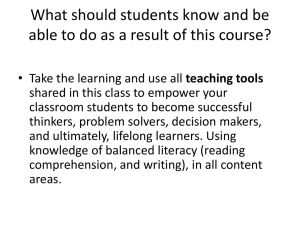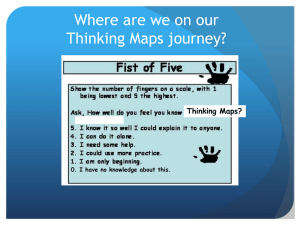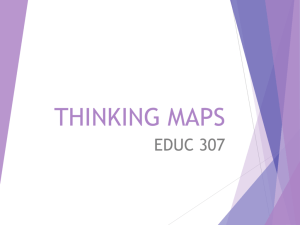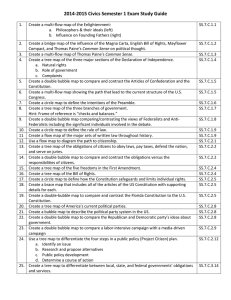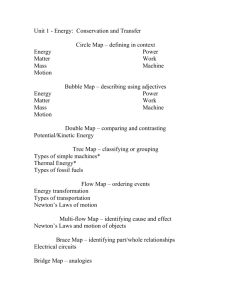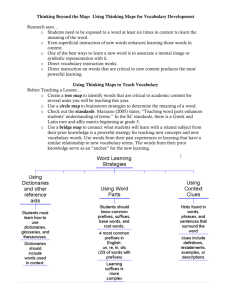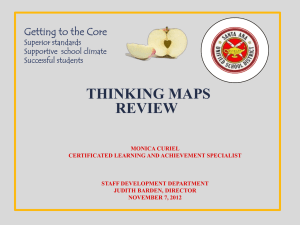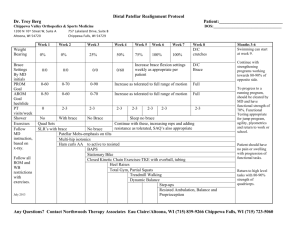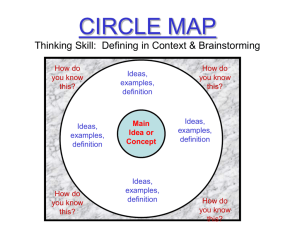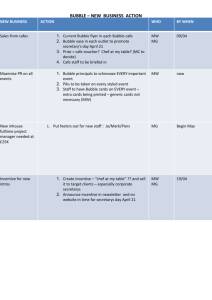Elementary Examples of Thinking Maps - POES-PDS
advertisement
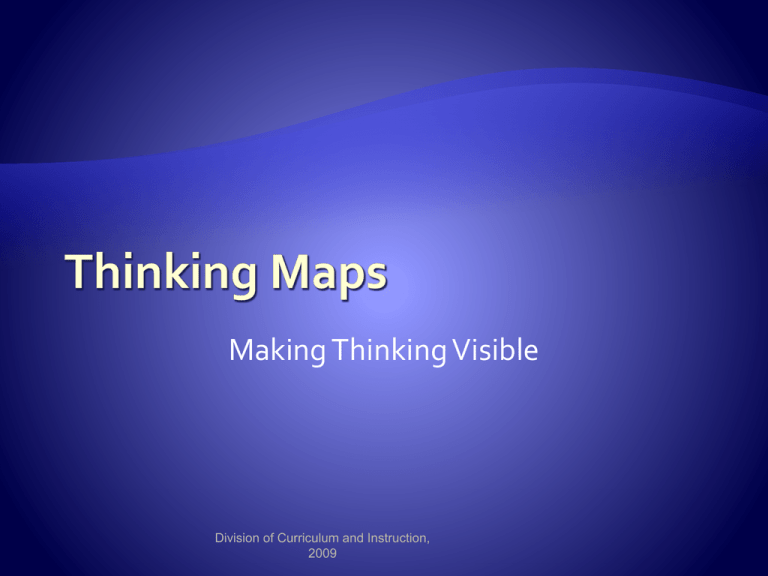
Making Thinking Visible Division of Curriculum and Instruction, 2009 Defining rocks in a Circle Map. Division of Curriculum and Instruction, 2009 What are Chimpanzees? Let’s define them! Division of Curriculum and Instruction, 2009 Circle Maps in math. Brainstorming what we know money. Division of Curriculum and Instruction, 2009 We can describe colors using a Bubble Map Division of Curriculum and Instruction, 2009 Kindergarteners use Bubble Maps to organize for writing. Division of Curriculum and Instruction, 2009 Comparing forms of transportation with a Double Bubble Map. Division of Curriculum and Instruction, 2009 Double Bubble Map Comparing text selections with a Double Bubble Map Division of Curriculum and Instruction, 2009 Categorizing forms of transportation using a Tree Map. Division of Curriculum and Instruction, 2009 Tree Maps help classify shapes. Division of Curriculum and Instruction, 2009 Classifying measurement for discussion using a Tree Map. Division of Curriculum and Instruction, 2009 Sequencing a story for retelling using a Flow Map. Division of Curriculum and Instruction, 2009 Pre-K children are using Flow Maps to sequence, too! Division of Curriculum and Instruction, 2009 Showing how addition has a sequence on a Flow Map! Division of Curriculum and Instruction, 2009 Demonstrating Cause and Effect using a Multi-Flow Map in science. Division of Curriculum and Instruction, 2009 Multi-Flow Map A Multi-Flow Map explains the cause and effect in money matters. Division of Curriculum and Instruction, 2009 Analyzing text features with a Brace Map Division of Curriculum and Instruction, 2009 Text features can be analyzed using a Brace Map. Division of Curriculum and Instruction, 2009 Brace Map A Brace Map helps us analyze a poem Division of Curriculum and Instruction, 2009 B r a c e M a p Let’s analyze a seed using a Brace Map. Division of Curriculum and Instruction, 2009 Bridge Maps help us see relationships. People in our schools have relationships to their work location. Division of Curriculum and Instruction, 2009 Bridge Maps in an elementary ELL classroom helps show relationships between products and their sources. Division of Curriculum and Instruction, 2009e Division of Curriculum and Instruction, 2009 The staffs of Mills-Parole, Rolling Knolls, West Annapolis, Germantown, Eastport, Georgetown East and Hillsmere Elementary graciously allowed us to invade their classrooms and photograph these wonderful Thinking Map applications. We extend our thanks to these wonderful schools and their staffs.
